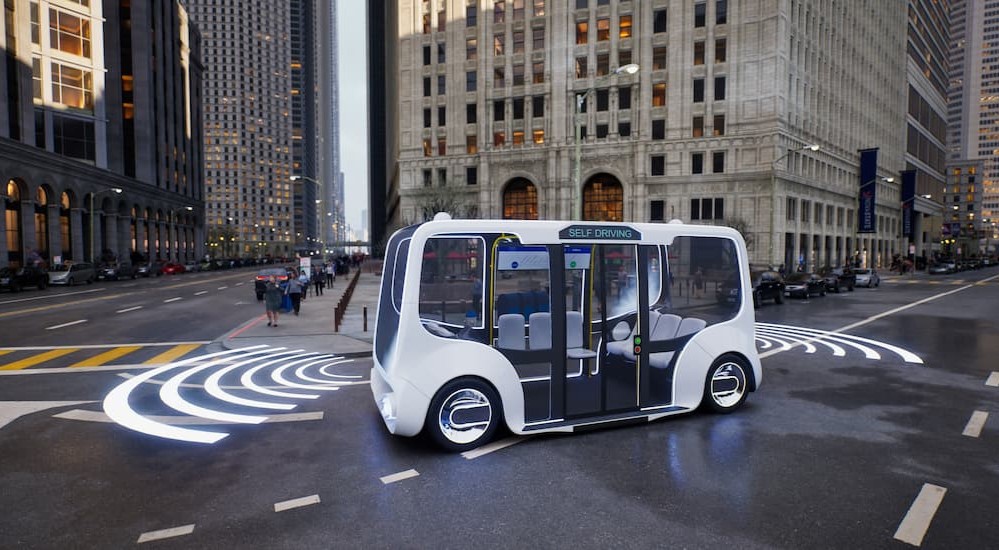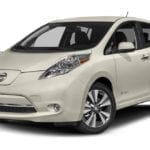Autonomous vehicles (AV) are closer than ever to being a reality. Despite development being slowed by multiple factors, such as the semiconductor shortage after the COVID-19 pandemic and getting the proper regulations in place, automakers are still plowing ahead on getting self-driving vehicles to market. Current predictions are that worldwide sales of Level 4 and Level 5 vehicles, which are fully self-driving automobiles, will reach 250,000 by 2030 and could reach four million in 2040.
However, despite the technology being upon us (or maybe because it is), many people are hesitant at the prospect of autonomous driving. According to a 2024 Forbes Advisor survey, a whopping 93% of Americans have reservations about everything from technology failures in self-driving cars to their safety and reliability. Furthermore, 51% of respondents said they’re unlikely to use or own a self-driving car anytime soon.
Granted, concerns about new technologies and change are nothing new. There was massive resistance to the automobile when it came out, and I recall the skepticism about everything from DVDs to laptops. Still, it begs the question of what autonomous driving will be used for and what we should expect. Even if self-driving cars never become the predominant vehicle among everyday commuters, there are several cases where I can see AVs playing a major role in the global landscape.
Driverless Taxis
The “robotaxi” isn’t just a vision of the future. For select US cities, it’s already here. Since 2022, Waymo (an offshoot of Google’s original AV project) has introduced driverless taxis in Phoenix and Scottsdale, AZ as well as Los Angeles and San Francisco, CA. Riders can use the Waymo app to order a pickup and provide their destination. Access is currently limited, and the company claims a waitlist of 50,000 people in Los Angeles alone.
Other companies such as Cruise, Mobileeye, and Zoox have either rolled out robotaxis in select areas or have plans to. Elon Musk also previously announced he would be unveiling a Tesla robotaxi service, though the date has since been pushed from August to October 2024. There are many potential benefits of driverless taxis, including reduced carbon emissions (in the case of EVs), better meeting passenger needs, less traffic congestion, and running 24/7 without worry of driver fatigue.
The biggest question mark right now is safety, with conflicting data about the viability of driverless vehicles. One report from the National Highway Traffic Safety Administration (NHTSA) says driverless cars are more than twice as likely to be involved in crashes, though the incidents are typically less severe. Conversely, a 2023 study of San Francisco human and autonomous ride-hailing services found AVs were in 65% fewer collisions. Cruise and General Motors were collaborators on the study, so some people may call the objectivity into question. Still, the driverless taxi is something to keep an eye on moving forward.
Public Transportation
On a related note, self-driving technology seems well-suited to public transportation such as buses and trains. Like driverless taxis, some people have already been introduced to this phenomenon. The first autonomous buses debuted in Scotland in May 2023, navigating a 14-mile route using computer-operated cameras and sensors. Then, in May 2024, Renault Group partnered with WeRide at the annual Roland-Garros tennis tournament to demonstrate an autonomous minibus.
The possible advantages of autonomous public transport are similar to self-driving taxis, only on a larger scale since these fleet vehicles can hold even more people. CAVForth, the leader of the Scotland bus project, estimates that more efficient computer operation can reduce fuel usage by 20%. The biggest difference is that while passengers can set a destination in the taxi, public AVs travel to preset locations.
Currently, the autonomous Scotland buses still have a driver at the wheel. This is because current United Kingdom laws require an operator who can manually control the vehicle if needed. Research has also found the presence of a real person gives a “perception of safety.” These factors could come into play as robo-transit technology continues moving forward.
Delivery Vehicles and Logistics
Whether it’s an important package or dinner, delivery is a huge part of the global landscape. More than 21 billion parcels are delivered in the US every year, nearly 54 million Americans use food delivery apps. The massive increase in home delivery opens an opportunity for self-driving technology.
In addition to the benefits already discussed like lower carbon emissions and better efficiency, autonomous delivery vehicles can address the perennial issue of not having enough drivers to keep up with demand. In 2021, American Trucking Associations estimated a shortage of more than 80,000 drivers. The same year, Domino’s Pizza chief digital officer Dennis Maloney told AP News, “There is no store in the country right now with enough delivery drivers.”
The precursors to autonomous delivery vehicles are already here in the form of delivery robots. First seen in 2016 and spurred forward by the COVID-19 pandemic, these “last mile” machines can make deliveries traveling up to 25 mph on a pre-programmed route. A human is usually available to take over the robot remotely if needed. Among the notable efforts, Clevon has been working with PostNet to deliver packages in Northlake, TX (a Dallas/Fort Worth suburb), and Domino’s is experimenting with Nuro self-driving pods after previously trying out an autonomous vehicle. The day may come soon when your online shopping orders, heavy equipment, or Thai food are brought to you by a self-driving car.
Manufacturing and Industry
This area may not be as obvious to car enthusiasts, but there is vast potential for self-driving vehicles as part of manufacturing, fulfillment, freight transport, and other operational needs. Within factories, we are seeing more semi-autonomous and full AVs such as automated guide vehicles (AGVs), forklifts, mobile robots, and cranes. A survey by PwC and The Manufacturing Institute found that 9% of manufacturers currently make use of independent vehicles, and another 11% plan to adopt them within three years. Furthermore, most manufacturers believe self-driving trucks could eventually reduce costs by up to 25%. Considering that trucks carry nearly 70% of all US freight, that’s a significant number.
Some AV options are being adopted in manufacturing faster than others. While the AGV market is forecast to grow by 9.4% per year through 2030, technology like drones and automated cars are struggling to catch on. Common reasons given for not incorporating AVs include cost, safety concerns, and the technology not yet being good enough. In an interview with PwC, policy analyst Greg Roger said driverless trucks becoming commonplace is still 10-20 years away. Even so, it’s one more outlet where AVs are showing promise.
Getting Ahead of the AV Curve
There is still a lot to learn and discover when it comes to automated cars and trucks. Artificial intelligence and computer software are constantly advancing, but their use is sometimes limited by outside factors. For example, fog and snow can obscure camera visibility, or the traffic lights in a town may not be equipped with the appropriate sensors. There’s also the matter of instilling widespread public trust in AVs to navigate roads safely.
Either way, autonomous vehicle development continues to march forward. Many everyday vehicles have features such as lane keep assist and automatic emergency braking that make them partially autonomous. You’ll even find systems like GM Super Cruise and Genesis Highway Driving Assist that can almost fully take over on specific roads. I’ll go ahead and say that even if you’re not yet on board with AVs, it’s a matter of time before they become a part of your life in some form.




